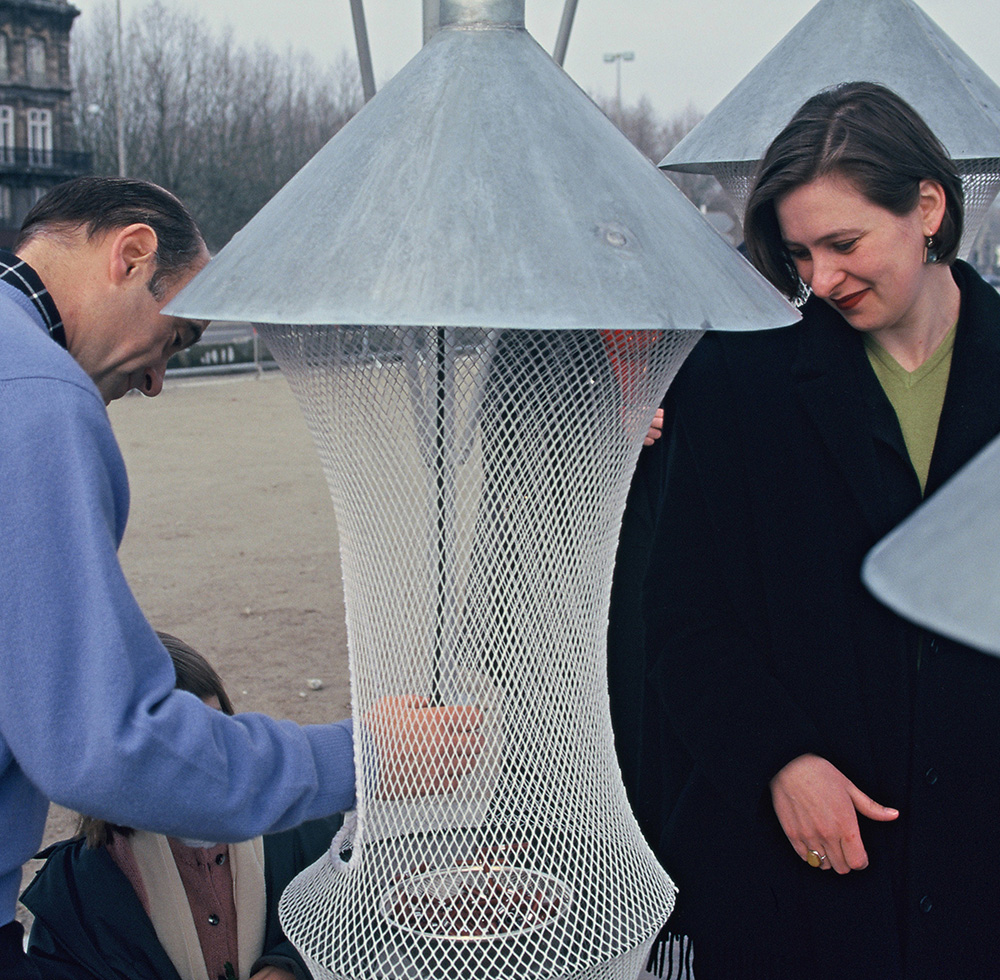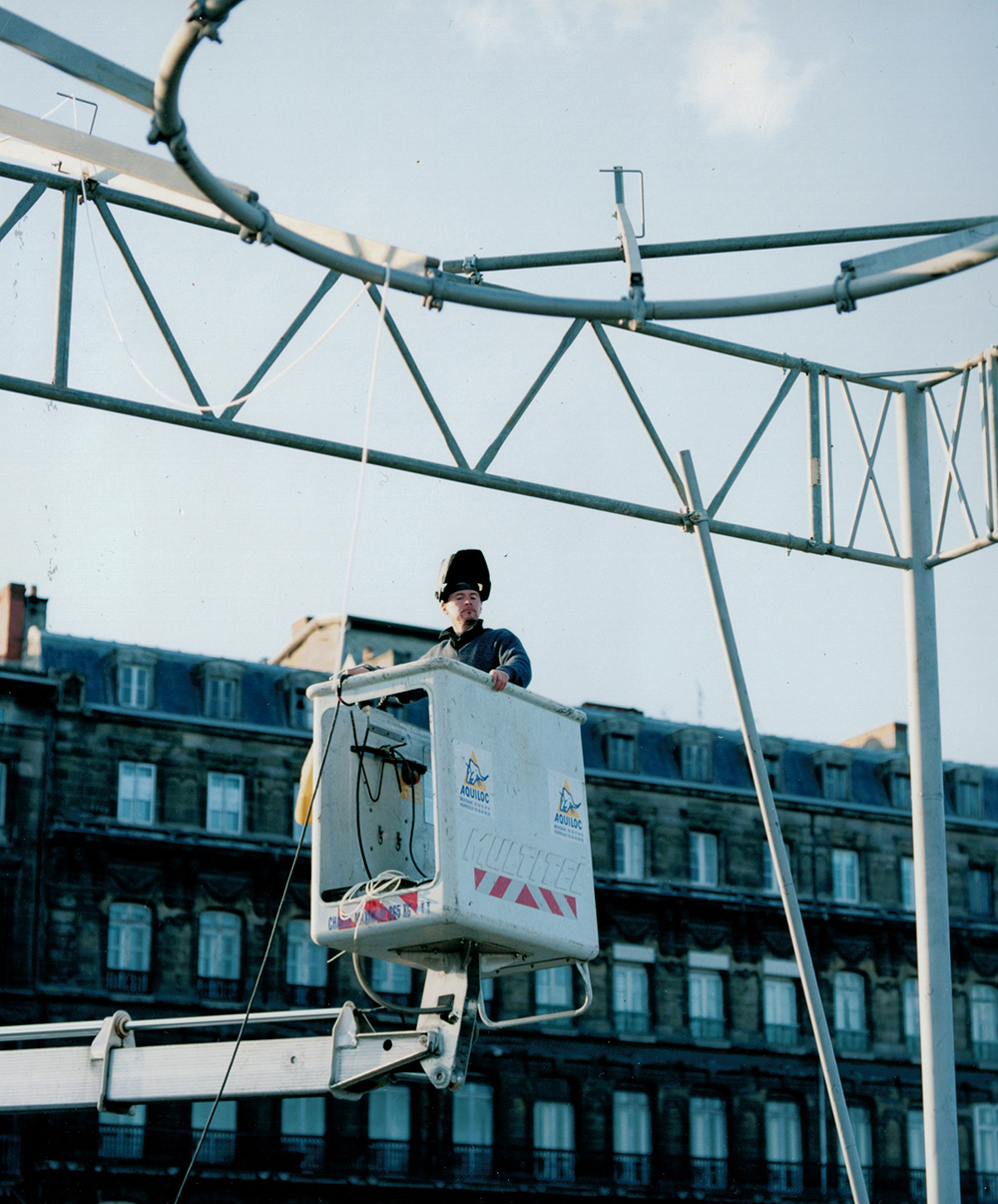
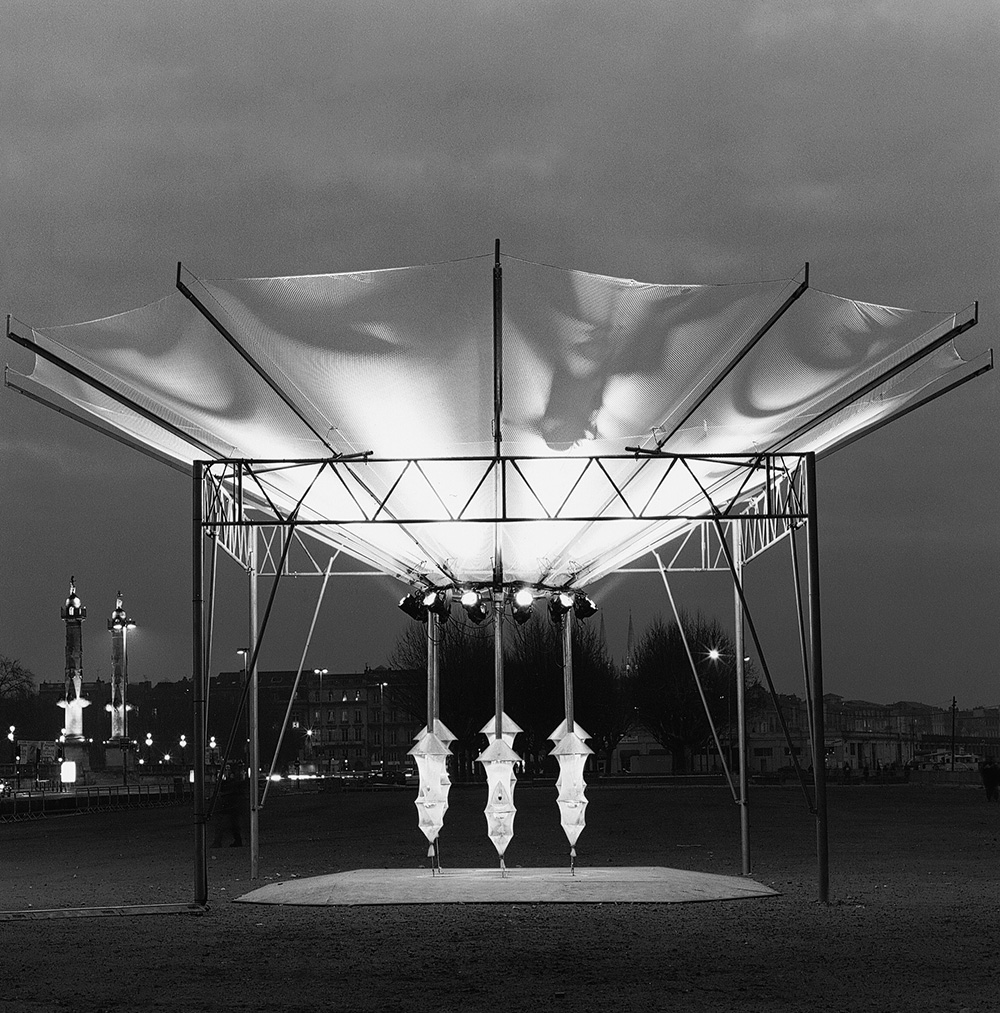
This unusual sculpture was displayed in Bordeaux for three days to grant wishes as part of the excitement of the transition from one millennium to the next. My goal was to highlight the richness of popular culture and the legacy of traditions in a playful, poetic and joyful way.
The audience was an active participant: each person was obliged to trigger a “sneeze” from the Wishing Machine, making a wish, keeping their desires secret, or sharing the "wishing recipe" they were given in the form of a dainty note.
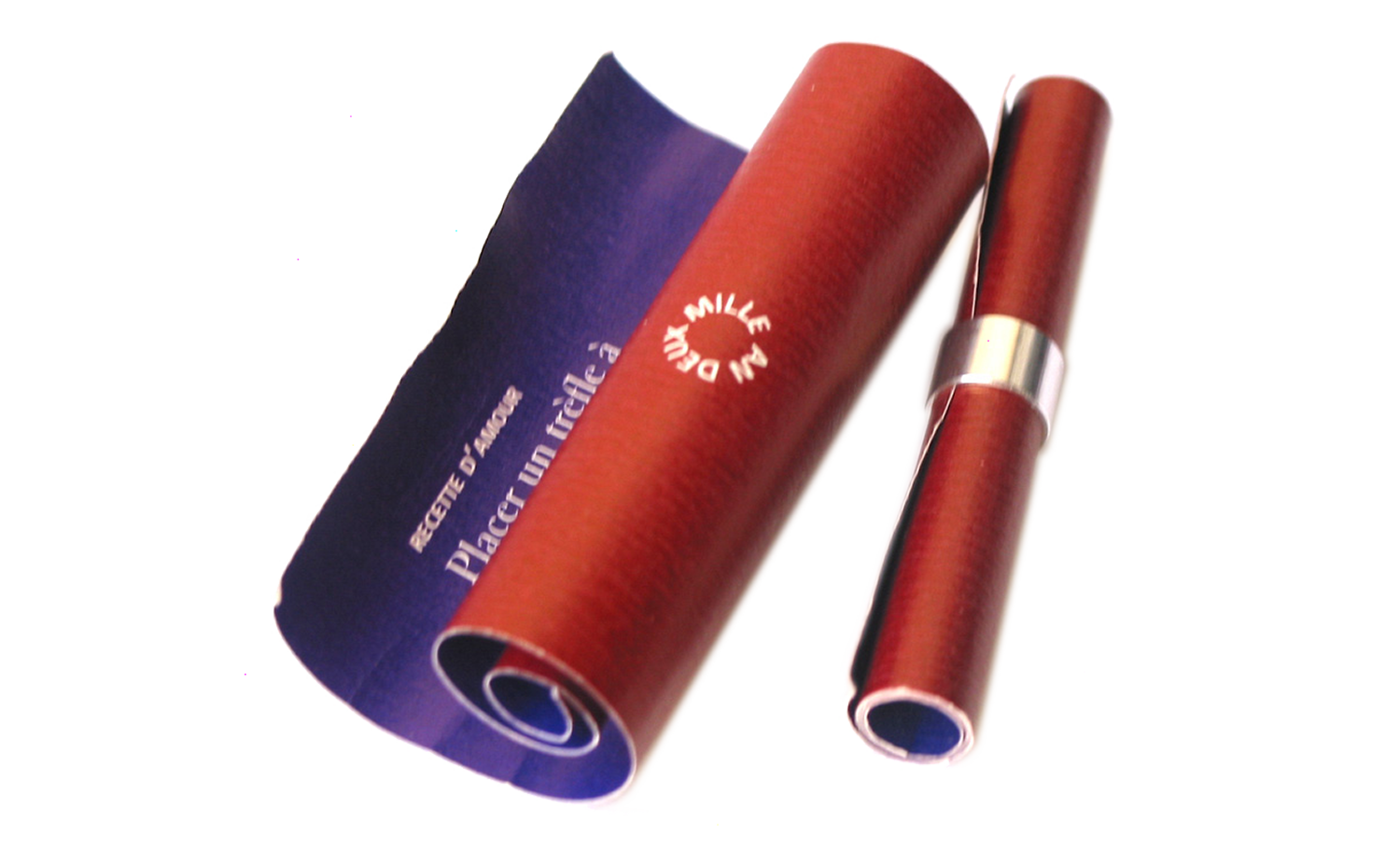
The recipes, poised somewhere between the sacred and the profane, were derived from popular customs from all over the world. They were related to the circumstances in which wishes are formulated or revealed a process for making wishes (of health, happiness, love, wealth, prosperity or success) come true.
That summer I had been thinking, during the off-season, about topics for a future greetings card. I thought it would be fun to catalogue all the possible situations in which a wish could be made. At the same time, I wanted to create an event that would draw attention to a disused and little-known church in Old Bordeaux. Slowly, the idea of a journey between the sacred and the profane evolved: an angel on a trapeze, a wishing machine that distributed recipes, a wishing tree on which to hang one's wishes, a fountain of happiness, a floor carpeted with colours and fragrances, three singers, a soundtrack of sneezes, and works of art by selected artists on the theme of ancient votive offerings and virgin saints...
When I thought of the "Wishing Machine", I had a couple of artists in mind. Patrice Ferrasse immediately popped into my head: having admired his work for about ten years, I had been waiting for the opportunity to call him since we met at the Cour Intérieur gallery... Having asked every obscure bookshop for a book outlining all the “circumstances in which to make wishes", I was finally advised by “The Reading Machine” to read The Book of Superstitions by Éloïse Mozzani! It was exactly what I needed. I wrote to the author: we met and became friends within the first quarter of an hour.
There followed a long period in which I approached many institutions and dubious patrons. Feeling uncomfortably like a ping-pong ball, I was sent from one organisation to another... After two painful years, I ended up putting my file back in the drawer of disappointed hopes…temporarily.
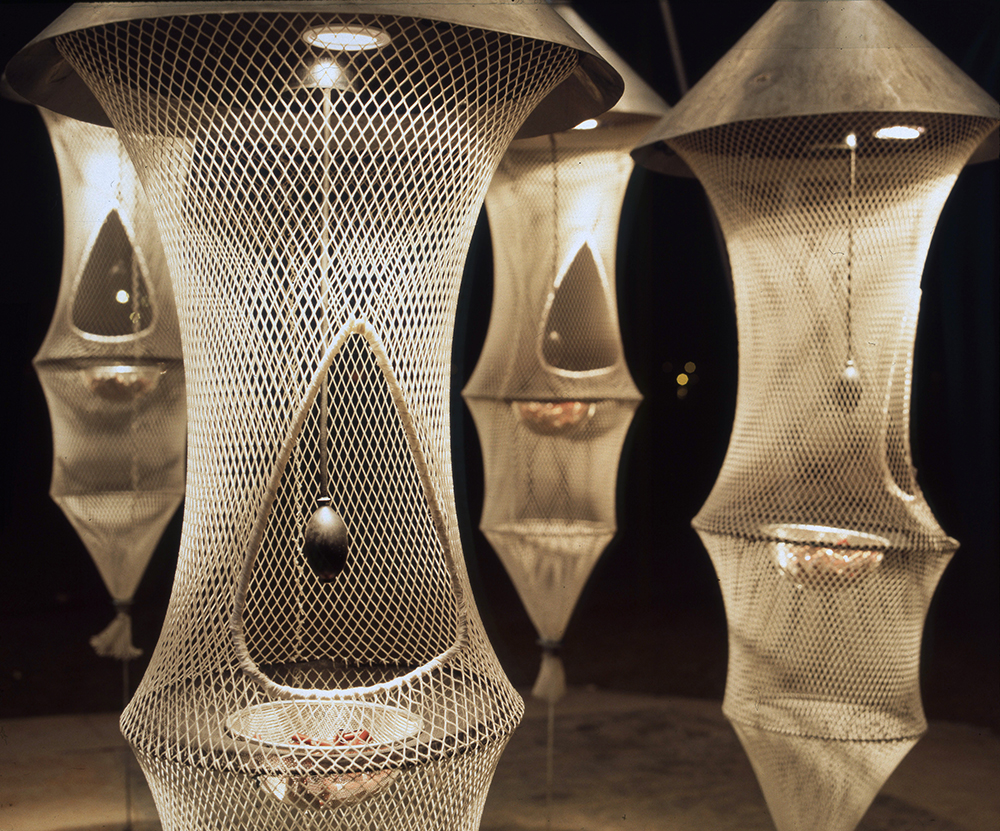
It was then that the city of Bordeaux asked me to adapt the project for the New Millennium festivities in 2000. First, I proposed creating many Wishing Games simultaneously in abandoned places of worship. Additionally, creating a giant Wishing Game in the city, with different locations connected by signs on the lamp-posts.
The Town Hall was only interested in the idea of the Wishing Machine itself. So, I redefined the game to keep its essence: giving and receiving, audience participation, an interactive mechanism – simultaneously sophisticated and accessible, and combining poetry, magic, aesthetics and humour... This was perfectly in line with Patrice Ferrasse's approach.
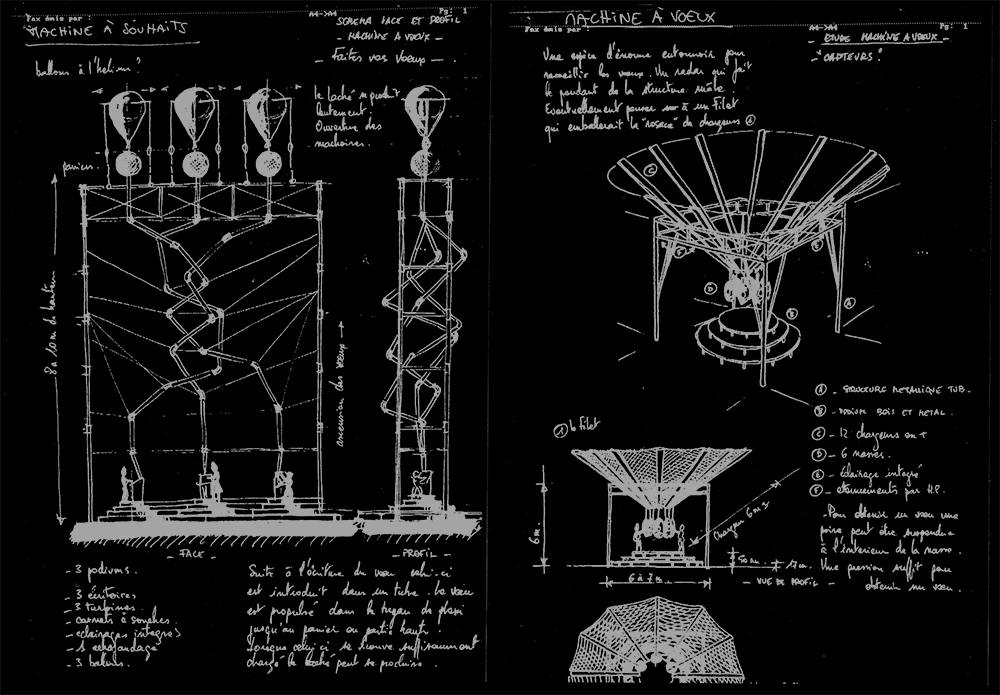
Drawings by Patrice Ferrasse
In the course of just two faxes, the Wishing Machines were born: two monumental ephemeral sculptures, playful, aesthetic and interactive. They were consistent with what we had imagined, while meeting the expectations of the Cultural Affairs Department..
The principle of "giving/receiving" also influenced the physical shape of the machines. One, in the impulse of giving, would have its structure reaching towards the heavens; while the other took on the curved shape of a bowl, as if to catch a message falling from the sky.
Unfortunately, due to budget and time constraints, only one of the two machines was completed. In addition, a storm made the assembly conditions challenging. Despite all the obstacles, this unusual sculpture appeared on the banks of the Garonne for 3 days at the beginning of the new century.
Nearly 40,000 people gathered to smile at the messages they received!
